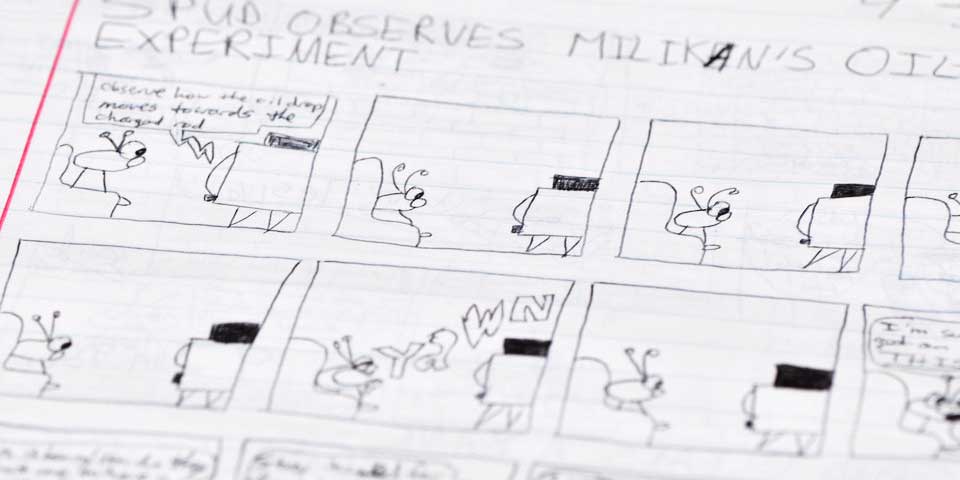I’ve been drawing newspaper style comics since I was a little kid. I’d create my own characters and send them off on misadventures. In high school, I created Spud, who would later become the protagonist in my Super Spud comic.
I drew all my Spud comics in a notebook and showed them to my classmates after a comic was finished. While my drawing skills weren’t exceptional and my plots were silly and simple, my classmates enjoyed my work very much and always asked when Spud will go on his next adventure. I regularly drew recurring and my favourites were parodies of popular culture and when Spud depicted the typical issues of my fellow students (and teachers). In other words, my comics resonated with my audience.
“People love comics about their work problems”
This quote comes from the fantastic ebook, The Awesome Adventures of Megacorps Marketers (or: How To Use Comics in B2B Content Marketing), by Radix Communications. Founder Fiona Campbell-Howes explains that using comics as a visual medium can create empathy with your audience. “It’s all about the story. Drawing the audience in creating characters they identify with in a world they recognize showing we understand their problems”. This is why, for example, a comic strip like Dilbert has been popular among cubicle dwellers and Family Circus and For Better or For Worse has been popular with families.
“And with luck, we also make them laugh”
Humour can form a great connection with your audience. In fact, humour is one of the winning ingredients for engaging with your audience on social networks.
Of course, comics can also tug at the emotions, another best practice of social media engagement and perfect for fundraising or an awareness campaign. Cartoonist and journalist Joe Sacco‘s comic books are a great example of this as well as…
Drawing readers into the character’s world
Joe Sacco wrote a brilliant a moving wordless comic book depicting life on the first day of the Battle of the Somme in World War I. As you look through the pages, you can see the emotions on the faces of the soldiers and villagers, the constant danger of being attacked, burying their fallen friends, marching into battle, dealing with destruction, and so on (check out this behind the scenes video about the book).
I had attended a lecture by Joe Sacco a few years ago where he explained how comics can create more impact than words or even from photo journalism. Using his books, Safe Area Gorazde: The War in Eastern Bosnia 1992-95 and Footnotes in Gaza, as examples, he showed a page from one of the books where the reader’s point of view was from the front of a charging tank. I remember Joe explaining that a photo journalist would have had to stand in front of the tank in order to take the picture. But a comic artist can witness the event from a distance and later illustrate what happened without risking injury or death.
Shareability
Who can’t resist sharing a comic? It’s the modern day clipping out an oh-my-gosh-that-is-so-me-! comic strip and pasting it on your fridge or the bulletin board at the office. Imagine including a comic strip in an email campaign or on a post on the company blog or social network account. Just make sure that the comic shows up optimally in news feeds on social networks.
More uses for comics in content marketing
Comics are versatile. They can be used in website serializations, trade show giveaways, press/blogger exclusives, printed direct marketing pieces.
As Fiona wrote in the above mentioned ebook, “Anything that will educate, entertain or inform… and lends itself to a visual storytelling format”. This means that comics are a great platform for content marketing. Along with sharing industry humour, comics can be used to explain technical concepts, perhaps communicate change in the organization, case studies, illustrate solutions to challenges your customers are facing, show how a new product can be used. The options are endless.
Consider incorporating comics into your next campaign, be it a single-panel piece of humour or a fully fleshed out plot. Can you think of a concept that can educate and entertain your audience?

